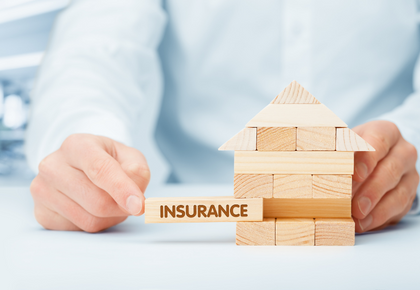Important HOA Insurance Updates That Your Board Needs to Know
As a board member, do you have a knowledge of basic insurance terms, the current property insurance marketplace, and insurance trends to help think through your next property insurance renewal?
Get to Know Important Insurance Terms
When you receive your insurance renewal proposals each year, you may see some terms that you are not familiar with. Please find these terms which we prepared for our 2022 board insurance seminar for easy access for all board members to assist you.
Minnesota Market
 In the last few years, insurable losses have been acute in the Twin Cities townhome association marketplace, primarily from successive years of large, damaging, hailstorms. These recurring weather driven events have resulted in several carriers changing policies to mitigate their risk exposure on large claim losses. In addition to premium increases, policy changes have included higher deductibles on a per building basis for townhome associations, and exclusions related to matching if there is only partial damage to insured elements such as roofs, siding, and windows.
In the last few years, insurable losses have been acute in the Twin Cities townhome association marketplace, primarily from successive years of large, damaging, hailstorms. These recurring weather driven events have resulted in several carriers changing policies to mitigate their risk exposure on large claim losses. In addition to premium increases, policy changes have included higher deductibles on a per building basis for townhome associations, and exclusions related to matching if there is only partial damage to insured elements such as roofs, siding, and windows.
Carriers have also become more conservative about insurance rates and underwriting guidelines for buildings with older critical building components such as roofs, plumbing and HVAC systems due to losses related to failure of older building infrastructure.
Interior water losses have had a significant impact on insurance coverage for condominium buildings nationwide with a shift by carriers to deductibles per dwelling unit for water losses rather than a single deductible for the entirety of the loss.
Claims on the Rise Nationally
 In the last few years, claims across the US have been on a tear. 2021 saw $270B in total losses, of which $111B were insured losses. The $111B was the fourth highest payout since the industry began tracking it in 1970. In comparison, losses in 2020 were $99B; in 2019 we saw over $71B in total insured losses; $93B in losses in 2018; and $100B in 2017. The single largest loss in 2021 was due to Hurricane Ida, which alone resulted in $36B in insured losses. Of the $270B in total loss worldwide, $148B were in North America. In the U.S. we had a total of $23B economic loss events - the second year in a row with at least 20 such occurrences and only the third time on record (2017, 2020, 2021). Insured losses were 108% higher than average ($44B) and 227% higher than the median ($28B). The U.S., which boasts the most robust insurance industry in the world, accounted for 71% of the global insured losses. It was the second year in a row that it topped 70%.
In the last few years, claims across the US have been on a tear. 2021 saw $270B in total losses, of which $111B were insured losses. The $111B was the fourth highest payout since the industry began tracking it in 1970. In comparison, losses in 2020 were $99B; in 2019 we saw over $71B in total insured losses; $93B in losses in 2018; and $100B in 2017. The single largest loss in 2021 was due to Hurricane Ida, which alone resulted in $36B in insured losses. Of the $270B in total loss worldwide, $148B were in North America. In the U.S. we had a total of $23B economic loss events - the second year in a row with at least 20 such occurrences and only the third time on record (2017, 2020, 2021). Insured losses were 108% higher than average ($44B) and 227% higher than the median ($28B). The U.S., which boasts the most robust insurance industry in the world, accounted for 71% of the global insured losses. It was the second year in a row that it topped 70%.
All of this has put pressure on insurance carriers’ liabilities, underwriting discipline and pricing nationally. In 2018 carriers were paying 90 cents in claims for every premium dollar collected, which only worsened from 2019-2021, with carriers averaging 99 cents in claims for every dollar collected over that 3-year period. These loss to premium ratios are not sustainable on a long-term basis within the industry.
It is also important to be mindful that for the most part, property insurance companies are also global insurers or are exposed to global reinsurance rates. Therefore, large insurable losses globally will also affect rates here in the United States. With the increasing frequency globally of large-scale weather events, the global insurance markets are stressed. Large carriers, as the insurers of risk for your Condominium/Homeowners Associations also need to buy re-insurance to protect their solvency during catastrophic losses and re-insurance rates are impacted by global carriers and loss trends.
Impact on Renewal Process
The volatility in the industry has prompted carriers to be more conservative in quoting new business particularly if the association has a history of losses and/or of switching carriers on a frequent basis. The carriers are looking for an opportunity to mitigate their risk exposure in a given year with a multi-year relationship so that losses will even out over time. This has resulted in some carriers leaving the Minnesota market and fewer opportunities for competitive quotes for certain types of properties that the carriers consider higher risk. In addition to property coverage, the umbrella liability market has been hit especially hard, with carriers unable to secure adequate capacity needed to provide coverage at a reasonable price.
Additionally, carriers are not finalizing or releasing their quotes until less than 30 days before policy expiration. This allows them to time more closely the quote release with any emerging risk exposures at the property as well as with rates and changes in the marketplace. Unfortunately for all of us, this is compressing our time to summarize quotes and board time to consider and act on its insurance placement.
Recommendations:
Property premiums are increasing, and insurance budgets should reflect that. Increases vary depending on the type, age, size, and loss history at a property. Most condominium properties are expected to receive insurance increases of at least 15% in the coming renewal year, and higher risk property types such as townhome associations with shingle roofs, where carriers have suffered larger losses, are seeing larger increases of 25% or more in many cases.
Our recommendations include:
-
Ensuring that the community is considering the impact of changes in coverage and deductibles as well as rates.
-
Inform homeowners about their responsibilities for loss assessment coverage when a portion of an insurable loss is uncovered by the Master Policy and is the responsibility of individual owners to insure as may be assessed by the association.
-
Seek guidance on your community’s budget from your FirstService management and insurance team and your insurance agent.
-
Maintain the property in the best shape possible (e.g., plumbing, electrical, heating, and roof) in accordance with maintenance schedules. Investing in capital replacements that reduce risk i.e., higher quality components that are a lower risk of damage or failure.
- Assess association risks and socializing tips for individual homeowners to mitigate risks. These include safety regulations or tips on patio or balcony grilling, smoking, maintaining shutoff valves and other plumbing fixtures, using one or more water sensors at locations of water risk, and installing high quality “no burst” washing machine hoses.

In addition to property insurance coverage, there are other important insurance coverage elements such as liability and directors and officers coverage that are part of the overall insurance package, but covered under policies separate from the property insurance policy.